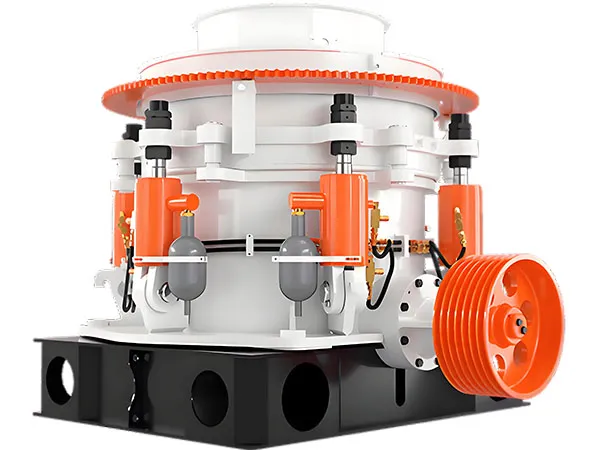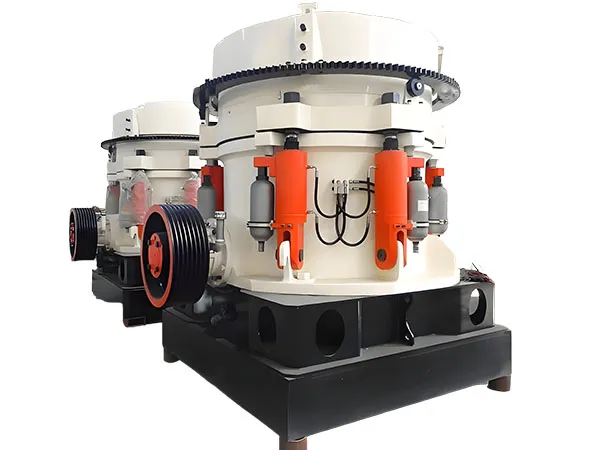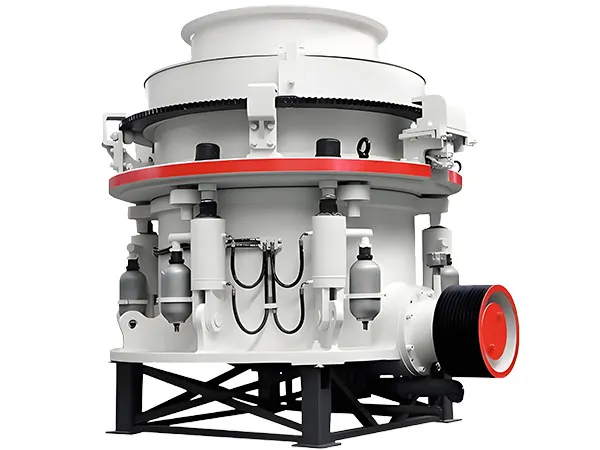The setting adjustment of a cone crusher plays a crucial role in its performance, production efficiency, and final product size. It refers to the control of the closed side setting (CSS) — the smallest distance between the mantle and the concave at the bottom of the crushing chamber.
Adjusting cone crusher settings is crucial for optimizing its performance, controlling product size and shape, and minimizing wear.

Before attempting any adjustments, always prioritize safety:
Shut down and isolate: Ensure the crusher is completely shut down and isolated from its power source (lock out and tag out).
Clear the chamber: Wait until all material has been cleared from the crushing chamber.
Use proper tools: Have the correct tools and equipment for the job, and follow manufacturer's instructions for their use.
Consult the manual: Always refer to your specific cone crusher's operation and maintenance manual for detailed instructions and safety procedures.
The primary settings on a cone crusher that you'll adjust are:
Closed Side Setting (CSS):
What it is: This is the narrowest distance between the mantle (moving part) and the concave (fixed liner) at the bottom of the crushing chamber.
Why it's important: The CSS is the most critical setting for determining the final product size, gradation, capacity, and power draw. A smaller CSS generally produces a finer product and vice versa.
How to check: Shut down the crusher and wait for it to clear. Use a tape measure, ultrasonic sensor, or specialized tool to measure the distance between the bottom of the mantle and the top of the concaves. Compare this to the manufacturer's recommended gap size.
How to adjust:
Typically, modern cone crushers use hydraulic systems to adjust the CSS. You'll operate hydraulic cylinders to raise or lower the mantle (or the bowl liner, depending on the crusher design).
Older models might involve adding or removing shims.
Always follow the manufacturer's specific procedure for your crusher model.
Impact of adjustment:
Smaller CSS: Finer product, lower capacity (less material can pass through), higher power draw, increased wear on liners.
Larger CSS: Coarser product, higher capacity, lower power draw, reduced wear on liners.
Eccentric Throw (Stroke):
What it is: This refers to the extent to which the mantle deviates from its central axis during its gyrating motion. It dictates how far the mantle moves away from the concave, affecting the rate at which material falls through the chamber.
Why it's important: It influences the crushing action, throughput, and product shape. A higher eccentric throw allows material to fall further with each rotation, which can be beneficial for throughput, but may lead to a more slabby product if not optimized.
How to adjust: This is often a less frequently adjusted setting, usually set by the manufacturer or during initial setup. It might involve changing eccentric bushings or other internal components. Consult your manual and a qualified technician for these adjustments.
Impact of adjustment:
Higher eccentric throw: Increased material flow, potentially higher capacity, but can affect product shape (less cubical).
Lower eccentric throw: Slower material flow, potentially finer product, better cubical product shape, but lower capacity.
Crusher Speed (RPM):
What it is: The rotational speed of the eccentric assembly.
Why it's important: Crusher speed affects product gradation and shape.
How to adjust: Speed is typically adjusted by changing the diameter of the sheaves (pulleys) on the crusher and motor.
Impact of adjustment:
Higher speed: Generally creates a finer product gradation and a better cubical product shape (due to increased inter-particle crushing).
Lower speed: Increases volumetric throughput and can produce fewer fines.

Beyond the direct adjustments, several operational factors influence cone crusher performance and should be considered when fine-tuning settings:
Feed Material Characteristics:
Size and Gradation: Ensure the feed size is within the crusher's design limits. Oversize material decreases capacity and can cause abnormal wear. Too much fine material can lead to "packing" (force overload), adjustment ring movement, and reduced efficiency. Ideally, feed should be well-graded with no significant gaps in size distribution.
Hardness, Abrasiveness: These properties influence wear rates and determine the crushing force required.
Moisture Content: Wet or sticky material can cause blockages, pressure buildup, increased liner wear, and diminished performance.
Desired Product Size and Shape: Your target product specifications are the primary drivers for adjusting CSS and other settings.
Choke Feeding: Aim to keep the crushing chamber as full as possible ("choke fed"). This maximizes inter-particle crushing, which improves product shape (more cubical) and crushing efficiency, and helps distribute wear evenly across the liners. Avoid underfeeding or overfeeding.
Liner Wear Profile: Regularly inspect the wear patterns on the mantle and concave liners. Uneven wear can indicate improper feeding, incorrect settings, or issues with the crushing chamber geometry, and can decrease capacity and increase wear rates.
Power Draw: Monitor the crusher's power consumption. Operating too far below the rated power can be inefficient, while exceeding it can damage the crusher. Aim for 75%-95% of rated power for optimal productivity.
Reduction Ratio: Cone crushers typically operate with a reduction ratio of 4:1 to 6:1. Pushing for higher ratios might strain the machine and reduce efficiency.
Overall Circuit Optimization: Remember that the cone crusher is part of a larger crushing and screening circuit. Its performance is linked to the proper operation of feeders, conveyors, screens, and other components. Adjustments to one part of the circuit may necessitate adjustments to others.

After making adjustments:
Start the crusher: Run it at the recommended settings.
Observe performance: Monitor product size distribution, power draw, and crushing force.
Adjust as needed: Make small, incremental adjustments to achieve the desired product size and optimal performance.
Record data: Document all settings and performance data for future reference and troubleshooting.
By diligently following safety procedures and understanding the interplay of these settings, you can effectively adjust your cone crusher to maximize its efficiency, product quality, and lifespan.
Jaw Crusher Selection Guide: How to Precisely Select a Jaw Crusher for Different Working Conditions
2025-12-05 06:38Advanced Eco-Friendly Impact Crushers: Optimizing Industrial Efficiency and Sustainability
2025-11-24 02:27Impact Crusher vs Jaw Crusher: Key Differences, Applications & Efficiency Guide
2025-11-19 03:12Impact Crusher Maintenance Guide: Tips to Maximize Efficiency and Extend Lifespan
2025-11-15 05:38Address: Luoyang Luoxin Industrial Park, Henan,China
E-mail: sales@yd-crusher.com
Phone: 86-139-3993-0123

Yude
Mechanical
Create the greatest value for customers
Provide the best quality products and services
86-139-3993-0123
sales@yd-crusher.com
Luoyang Luoxin Industrial Park, Henan,China